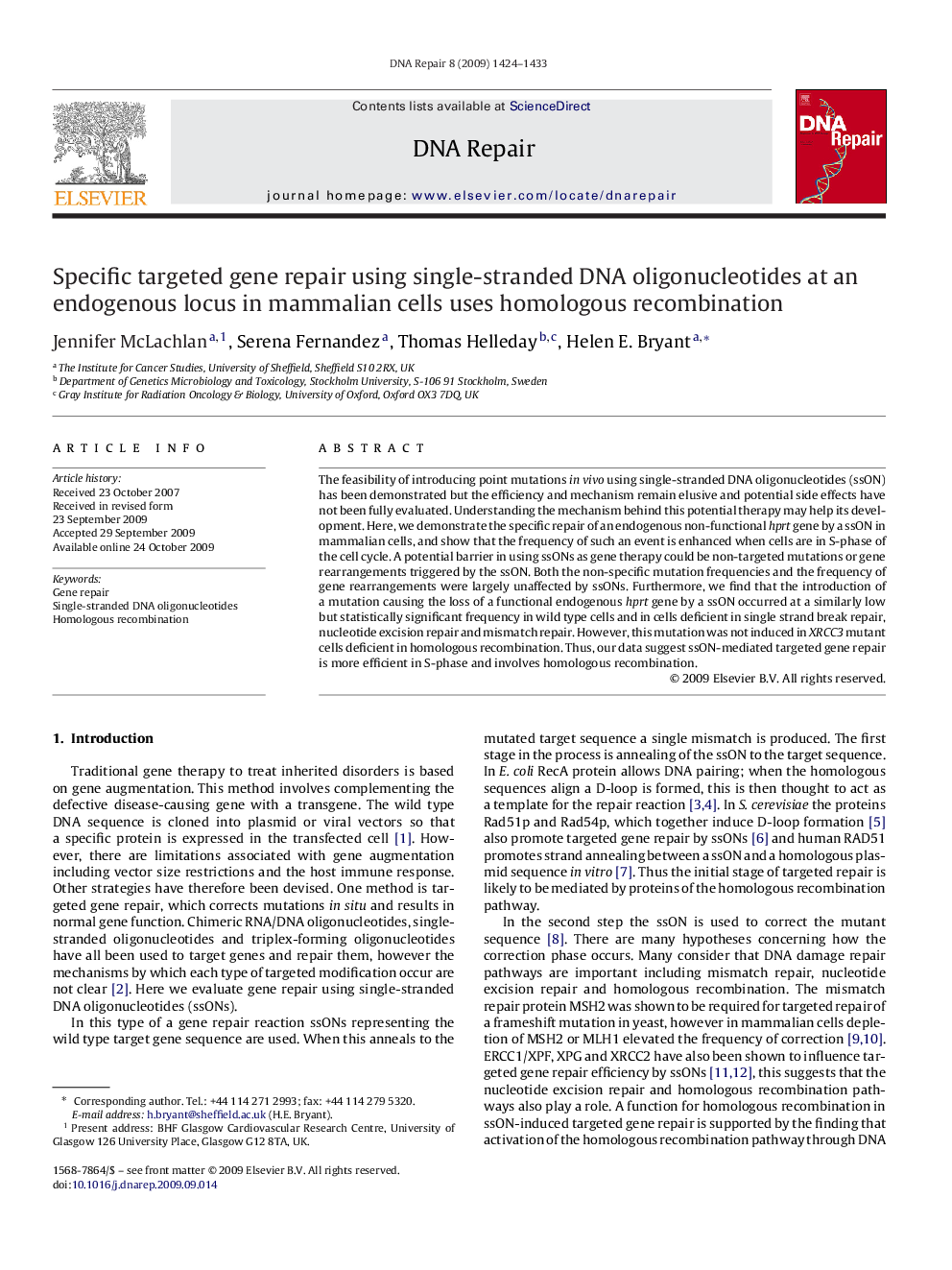| Article ID | Journal | Published Year | Pages | File Type |
|---|---|---|---|---|
| 1981235 | DNA Repair | 2009 | 10 Pages |
The feasibility of introducing point mutations in vivo using single-stranded DNA oligonucleotides (ssON) has been demonstrated but the efficiency and mechanism remain elusive and potential side effects have not been fully evaluated. Understanding the mechanism behind this potential therapy may help its development. Here, we demonstrate the specific repair of an endogenous non-functional hprt gene by a ssON in mammalian cells, and show that the frequency of such an event is enhanced when cells are in S-phase of the cell cycle. A potential barrier in using ssONs as gene therapy could be non-targeted mutations or gene rearrangements triggered by the ssON. Both the non-specific mutation frequencies and the frequency of gene rearrangements were largely unaffected by ssONs. Furthermore, we find that the introduction of a mutation causing the loss of a functional endogenous hprt gene by a ssON occurred at a similarly low but statistically significant frequency in wild type cells and in cells deficient in single strand break repair, nucleotide excision repair and mismatch repair. However, this mutation was not induced in XRCC3 mutant cells deficient in homologous recombination. Thus, our data suggest ssON-mediated targeted gene repair is more efficient in S-phase and involves homologous recombination.
